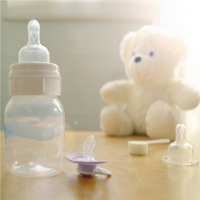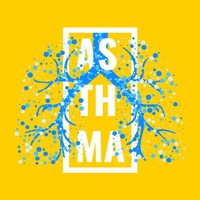
According to a new meta-analysis, prenatal exposure to Bisphenol A (BPA) is associated with an increased risk of asthma and wheezing in school-aged girls (1).
Global paediatric asthma prevalence has increased significantly over the last 40 years, and asthma is now the most reported non-communicable disease among children worldwide (2). Several factors including diet, lifestyle, genetics, and environmental factors (microbial exposure, exposure to passive smoking and air pollution) are believed to underlie this trend (3,4). More recently, there is increasing evidence that early-life chemical exposures may significantly impact the development of the immune system and increase the risk of asthma and allergies in children (5,6,7).
BPA, a common endocrine-disrupting chemical, has gained attention recently for its ubiquitous exposure and potential health effects, including carcinogenesis, neurogenesis, reproductive effects and immunotoxicity (8,9). It is produced in large quantities (>7 million tons per year worldwide) and is used in the manufacture of polycarbonate plastics (e.g. toys, water bottles, dental sealants) or epoxy resins (coating the insides of cans for beverages and food) (1). The European Chemicals Agency (ECHA) included BPA on its list of substances of "very high concern" in 2017 (10). Consequently, some countries have limited its use, leading manufacturers to replace BPA with other bisphenols with suspected similar toxicity (11).
Although BPA in infant feeding bottles has been banned or voluntarily phased out in some countries, it is still used in plastic toys and other items used by infants and young children, and international biomonitoring studies confirm that >90% of children in the United States, Europe, Asia, and Australia are exposed to BPA (12). In addition, children typically have elevated exposures and higher serum concentrations of BPA than adults due to their low metabolic capacity, higher intestinal absorption, lower body size to surface area and food/water intake ratios, object-to-mouth activities, and maternal exposure through placenta and breastfeeding (12,13,14,15,16).
The early life stages (from conception to age two years) are critical windows of growth and development, and prenatal BPA exposure has been shown to affect offspring immune function in experimental studies (13,14). Due to the presence of oestrogen receptors in immunomodulatory cells, BPA has been shown to influence immune responses by acting as a xenoestrogen ![]() to promote T-helper type 2 cell responses, with increased cytokines (interleukin (IL)-4, −5, and −13), and immunoglobin (Ig) E production (15,16,17,18,19). These responses are characteristic of allergic asthma. Animal models have also shown that BPA can affect pulmonary function and cause airway inflammation (20). However, epidemiological data regarding associations between prenatal BPA exposure and asthma are limited.
to promote T-helper type 2 cell responses, with increased cytokines (interleukin (IL)-4, −5, and −13), and immunoglobin (Ig) E production (15,16,17,18,19). These responses are characteristic of allergic asthma. Animal models have also shown that BPA can affect pulmonary function and cause airway inflammation (20). However, epidemiological data regarding associations between prenatal BPA exposure and asthma are limited.
The current meta-analysis included eight studies, analysing urine samples taken during pregnancy from 3,007 women from six European countries (Spain, France, Greece, Norway, the Netherlands, and the United Kingdom) collected between 1999 and 2010, and questionnaire and spirometry data on the respiratory health of their offspring collected between 7- and 11-years age.
Analysis of the urine samples revealed a high prevalence of BPA, found in 90% of the samples. The substitute bisphenols, bisphenol F (BPF) and bisphenol S (BPS), were less prevalent and were only detected in 27% and 49% of samples, respectively. This finding was probably due to the study being conducted before these chemicals became widely available.
This study revealed an association in girls between concentrations of BPA in maternal urine during pregnancy and an increased risk of asthma and wheezing at school age. Among girls, each doubling in BPA concentration during pregnancy was associated with a 13% increased risk of having current asthma, and a 14% increased risk of wheeze.
However, no association was observed between prenatal BPA exposure and lung function in school-aged boys or girls. Furthermore, there was no association between BPA exposure and asthma or wheezing in boys, or BBF and BPS exposure and respiratory health in boys and girls.
Previous studies have demonstrated an association between changing oestrogen levels (endogenous and xenoestrogen ![]() s) and asthma (21,22,23,24). The sexual dimorphism of asthma is especially observed in periods of hormonal imbalance such as puberty, pregnancy, and menopause (21). Given the endocrine-disrupting capacity of bisphenols, and their ability to alter key hormone-signalling pathways, they may be able to induce changes in sex hormones and immune function, which may partly explain the sex-specific results found in this study.
s) and asthma (21,22,23,24). The sexual dimorphism of asthma is especially observed in periods of hormonal imbalance such as puberty, pregnancy, and menopause (21). Given the endocrine-disrupting capacity of bisphenols, and their ability to alter key hormone-signalling pathways, they may be able to induce changes in sex hormones and immune function, which may partly explain the sex-specific results found in this study.
The meta-analysis includes cross-sectional studies, and the findings are limited to single samples to measure BPA exposure and therefore are not capable of establishing a causal relationship between BPA and childhood asthma or wheeze. Regardless, the meta-analysis builds on existing evidence linking prenatal or early childhood BPA exposure to respiratory symptoms and other health conditions. Further research is needed to assess temporal variabilities in bisphenol exposure concerning health outcomes and provide data to improve chemical regulation.
Furthermore, the findings highlight the need for minimising BPA exposure to reduce adverse health risks. Tips for reducing BPA exposure include avoiding plastic containers with numbers 3 and 7, avoiding tetra pack liquids, eating less canned food, and choosing ceramic, stainless steel, or glass re-usable containers where possible, especially for hot food and liquids.






